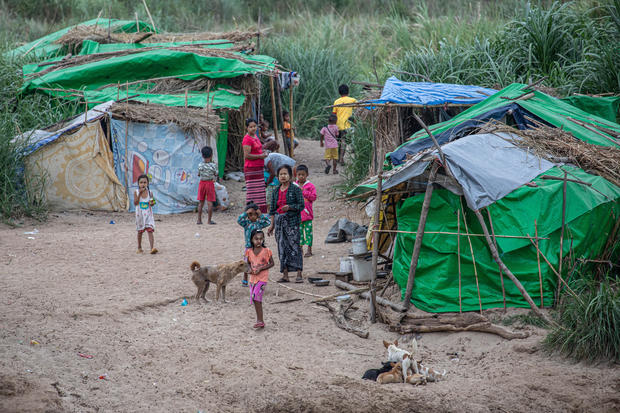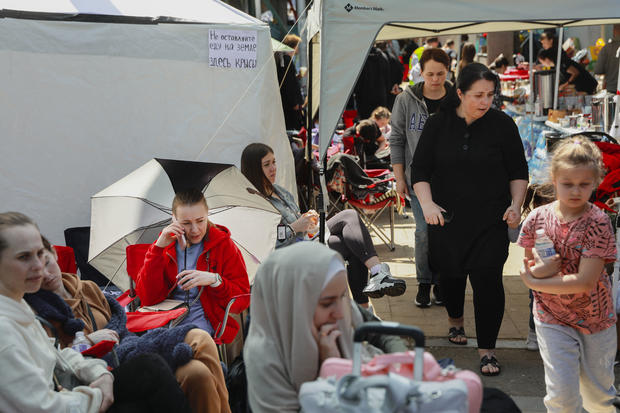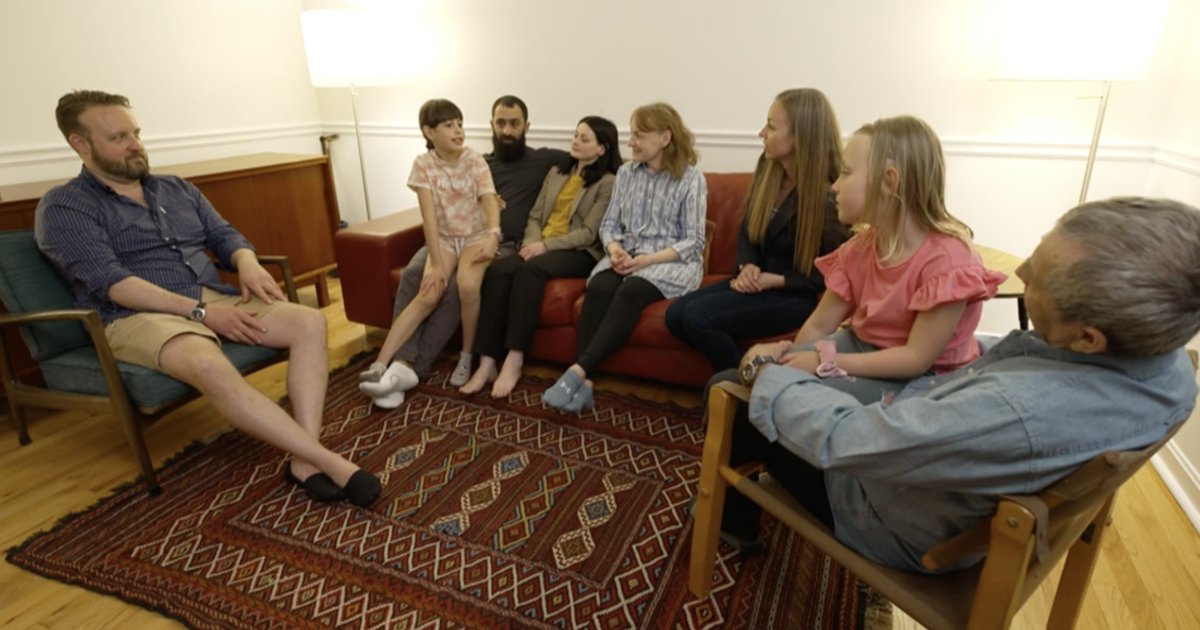How does the refugee process work, and why has the U.S. struggled to increase admissions?
Since 1975, the U.S. has welcomed nearly 3.5 million refugees displaced by war and violence across the globe. But recently, the U.S. refugee program has failed to respond to displacement crises, and U.S. admissions of refugees have reached historic lows.
The U.S. did not use its refugee system to resettle more than 70,000 Afghans evacuated from Afghanistan last year after the Taliban seized their country, and the program will not be the main mechanism through which the U.S. will welcome some of the millions of Ukrainians fleeing the Russian invasion of Ukraine.
Due to Trump-era restrictions and the COVID-19 pandemic, U.S. refugee admissions reached back-to-back record lows in fiscal years 2020 and 2021. President Biden set a goal of receiving up to 125,000 refugees in fiscal year 2022, but fewer than 9,000 refugees were resettled during the first six months.
Facing limited options to come to the U.S. directly, more than 20,000 Ukrainians displaced by the war have traveled to Mexico to seek entry along the U.S. southern border in the past three months, government figures show.
"That's such an indictment of our refugee system, that that's the most expeditious way to come," Danilo Zak, a policy analyst at the National Immigration Forum, told CBS News, calling the U.S. resettlement system "sluggish."
How does the refugee process work and why has the Biden administration struggled to increase admissions? Here's what you need to know.
Who is a refugee under U.S. law?
The Refugee Act of 1980, the foundational law for the modern U.S. refugee system, was largely based on international treaties forged after World War II and the Holocaust that were designed to prevent governments from sending people to countries where they could be harmed.
That law defined a refugee as a person who has suffered persecution or has a well-founded fear of being persecuted in their home country because of their race, nationality, political views, religion or membership in a social group.
Unlike asylum, which can be requested by immigrants who are already on U.S. soil, like those who cross a U.S. border, refugee status is extended to people overseas who have fled their homelands and settled in third country locations, such as refugee camps.
How does the U.S. refugee process work?
To enter the U.S. resettlement pipeline, most refugees need a referral from the United Nations, a U.S. embassy or a nongovernmental organization. Close relatives of refugees already in the U.S. and those who qualify for special programs don't need a referral and can apply for resettlement directly.
Prospective refugees must submit biographical information, biometrics and documents to U.S.-funded Resettlement Support Centers, which check names against U.S. watch lists. Staff at these overseas centers also interview applicants and prepare their cases for Department of Homeland Security (DHS) refugee officers.
U.S. refugee officers then interview prospective refugees, usually in-person in third countries, to determine whether applicants meet the refugee definition. If the officer finds the testimony credible and consistent with conditions in the applicants' home countries, they can conditionally approve cases for resettlement.
The government conducts several security screenings on approved refugees before they arrive in the U.S., using databases from the FBI and other federal agencies to ensure they won't pose a public safety or national security threat to the U.S.
The last step is a medical check to ensure refugees will not spread a communicable disease in the U.S. Once refugees undergo this exam and pass all security screenings, they can obtain final approval to enter the U.S.
The entire refugee process takes between 18 to 24 months on average to be completed.
What happens to refugees once they enter the U.S.?
Before reaching the U.S., refugees are matched with a resettlement group. Nine nonprofit resettlement groups and dozens of their local affiliates help refugees integrate into U.S. society, helping them find affordable homes and jobs, apply for benefits, enroll children in schools and secure basic necessities.
For the first few months after their arrival, refugees typically receive rent assistance from the resettlement groups. They are also temporarily eligible for certain government programs, including cash assistance, medical services, food stamps and job placement initiatives.
After living in the U.S. for a year, refugees become eligible for permanent residency. After five years in the U.S., they can apply to become naturalized citizens.
How many refugees does the U.S. receive each year?
Since 1980, the U.S. has set a refugee "ceiling" every fiscal year. The ceiling is the maximum number of refugees who can be resettled and does not require the U.S. to receive an exact number of refugees. For decades, Republican and Democratic presidents sought to resettle tens of thousands of refugees yearly.
In fiscal year 1980, under the presidency of Jimmy Carter, a Democrat, the U.S. received 207,000 refugees, still a record for the modern refugee system. Refugees admissions dropped significantly under Ronald Reagan, a Republican, but his administration still received more than 60,000 refugees every fiscal year.
The Republican administration of George H. W. Bush dramatically increased refugee admissions, resettling 132,000 refugees in 1992 alone. Under Democratic President Bill Clinton, refugee admissions decreased but remained over 70,000 every year and rebounded during his second term.
After the 9/11 terrorist attacks, the George W. Bush administration suspended the refugee program, prompting refugee admissions to plummet to 27,000 in fiscal year 2002, a record low at the time. Admissions remained at that historic low level in 2003, but increased later in the Bush presidency.
Barack Obama's administration allocated 80,000 refugee spots annually during its first four years. Admissions initially rose to 74,500 in 2009 before dropping below 60,000 in 2011 and 2012. Refugee admissions increased during Obama's second term, reaching 85,000 in his last full fiscal year.
How did Trump restrict refugee admissions?
President Donald Trump, a Republican, came into office challenging the bipartisan consensus on refugee resettlement, portraying refugees as economic, security and cultural threats to the U.S.
In his first week in office, Trump paused refugee admissions, citing national security concerns. He then slashed in half the 100,000-person refugee ceiling set by Obama for fiscal year 2017. His administration set consecutive record low refugee caps for the following years, allocating just 15,000 spots for fiscal year 2021.
The Trump administration also added additional layers of security screenings to the refugee program; proposed an order to allow jurisdictions and states to veto the resettlement of refugees in their communities; and severely narrowed the categories of refugees eligible for U.S. protection.
The Trump restrictions and record-low ceilings led the U.S. organizations that assist refugees to layoff personnel and close offices across the country, gutting the domestic resettlement infrastructure. During Trump's last full fiscal year, the U.S. received 11,841 refugees, a historic low at the time.
How did the pandemic affect the refugee program?
Citing the COVID-19 pandemic, the Trump administration suspended refugee admissions for several months in 2020. In-person refugee interviews, which had dropped during his administration, were also paused in March 2020 due to the pandemic and only resumed in the summer of 2021.
Before the pandemic, the U.S. interviewed an annual average of between 65,000 and 75,000 refugee applicants, mostly during "circuit rides" that dispatched refugee officers to refugee camps overseas. In fiscal year 2019, U.S. refugee officers completed 44,000 interviews and 97 circuit rides, according to DHS data.
In fiscal year 2020, U.S. refugee officers completed 7 circuit rides and 1,200 refugee interviews, a record low. Refugee interviews and circuit rides rebounded to 9,100 and 12 in fiscal year 2021, respectively. Refugee officers have completed 13,600 interviews and 23 circuit rides so far in fiscal year 2022, DHS data show.
Does Biden plan to increase refugee admissions?
Early in his presidency, Mr. Biden rescinded Trump's narrow refugee categories, but kept the record low 15,000 refugee cap for that fiscal year, citing the gutted resettlement system. After intense backlash from progressives, Mr. Biden later raised the cap to 62,500 spots, of which just 11,411 were used, an all-time low.
Refugee admissions have picked up in recent months, but they are still on track to be well below the 125,000 refugee cap for fiscal year 2022. Given the years-long nature of the refugee process, the Biden administration has turned to another legal authority to quickly resettle certain refugee groups.
The administration is planning to use the "humanitarian parole" authority to admit displaced Ukrainians identified by U.S. citizens or groups willing to sponsor them. While it is much more expeditious than the refugee process, parole does not provide a path to permanent legal status in the U.S.
While the administration has said many Ukrainians are only looking for a temporary safe haven, those who decide to stay in the U.S. permanently after being granted parole could find themselves facing the same legal limbo faced by tens of thousands of Afghan evacuees who entered the U.S. under that authority last year.
The private sponsorship initiative for displaced Ukrainians, however, could help the administration set up a broader program it intends to unveil this year to allow U.S. individuals and organizations to sponsor refugees from different countries across the world.






